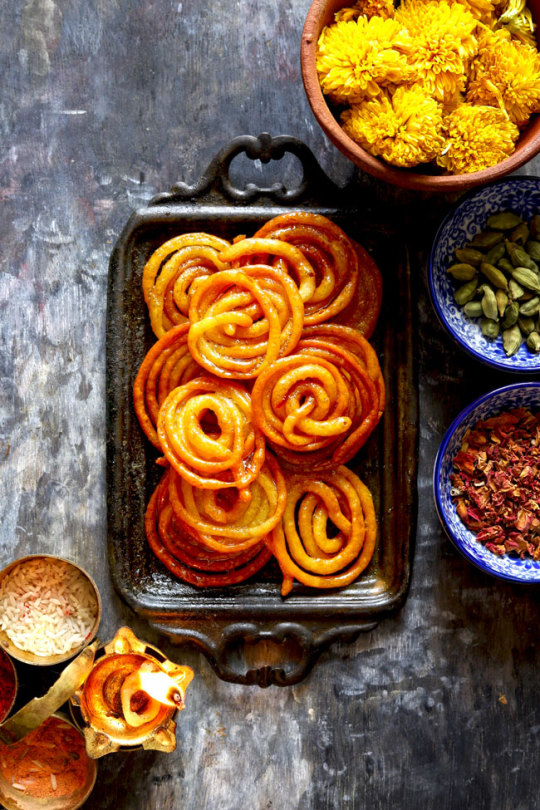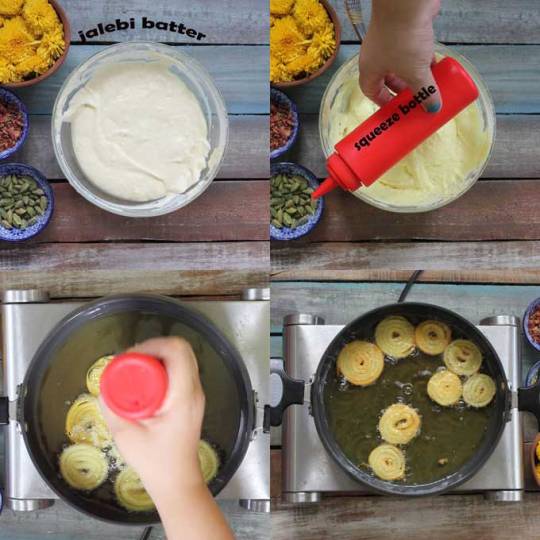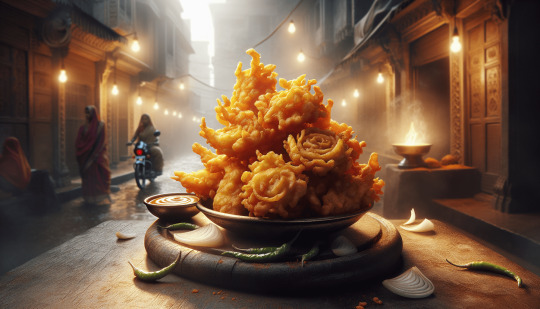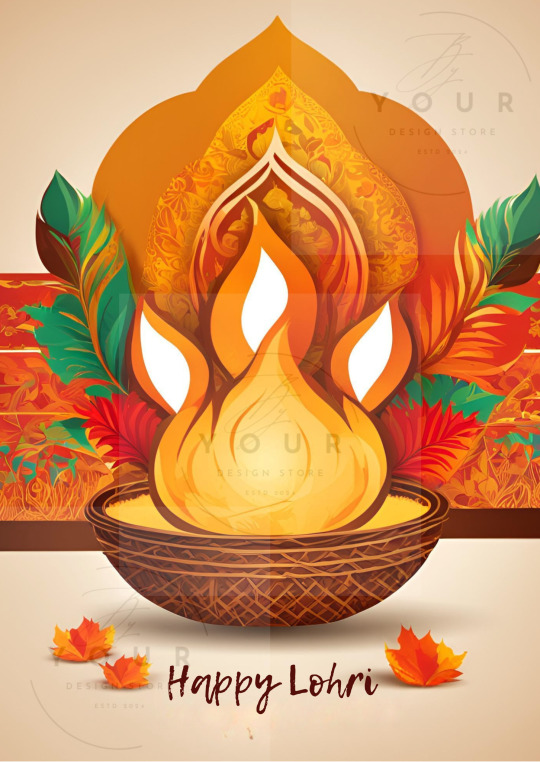#food festivals in india
Explore tagged Tumblr posts
Text
Food Festivals In May 2023 Across India Promise Lots Of Fun, Food And Festivities
May 2023 is going to be a fun-filled month for all the foodies out there. There’s no better way to celebrate the bright summery days than with some delicious foods and refreshing beverages. And wait, lots of mangoes too. Restaurants all across India are diving into the summer spirit with a host of food festivals. Whether you are looking for sweet mango treats or reminiscing traditional Indian…

View On WordPress
0 notes
Photo




DIY Jalebi
Jalebi – the deep-fried pretzel-like sweet from India, is well-celebrated among food lovers. Across the Indian sub-continent, it is readily available at sweet shops, restaurants, and street carts.
✖✖✖✖✖✖✖✖
sew-much-to-do: a visual collection of sewing tutorials/patterns, knitting, diy, crafts, recipes, etc.
110 notes
·
View notes
Text
Onion Bhajiya: A Taste of Indian Tradition
Onion Bhajiya, a beloved Indian snack, embodies the essence of Indian street food with its crispy, savory delight and tradition.
Onion Bhajiya, also known as Onion Pakoras, are a quintessential Indian snack that embodies the spirit of Indian street food culture. Originating from the diverse culinary landscape of India, these fritters have become synonymous with the monsoon season and are a popular choice during family gatherings and festive celebrations. The humble onion, coated in a seasoned gram flour batter and…

View On WordPress
#chai accompaniment#coffee snack#cooking at home#deep-fried delights#easy fritters recipe#family recipes#festive food India#food culture India#gram flour recipes#homemade pakoras#Indian cuisine#Indian snack#Indian street food#monsoon snacks#onion bhajiya#onion pakora recipe#panvel#quick snacks#savory snacks#traditional Indian food#vegetarian appetizer
2 notes
·
View notes
Text
The Maru Festival offers a wide range of cultural performances, including folk music, dance, camel races and traditional games. Traditional Rajasthani music and dance forms like Gair and Fire Dance are captivating highlights.
#incredible india#indian culture#best places to visit#best places to travel#rajasthan#rajasthani cuisine#rajasthani food#folk songs#folk dance#desert festival#maru mahotsav#maru festival#jaisalmer#tug of war#colorful procession#desert safari#fire dance#gair dance#great indian festival
0 notes
Text
India has different langauges depending on what state you're in and I've never seen an Indian behave the way Americans do. Do you seriously think you're the only country with regional accents? England has those, and it's literally tiny, don't make me laugh.
People call you rude because you are extremely rude and self centred, not to mention ignorant - any source for your "Brazil is roughly the size of Texas" claim yet btw?
love when a poll says to share where youre from and everyone says their country like a normal person and then americans give you random letter codes. "im from south MN" like girl on the shelf? are you a book or perhaps a vinyl record?

#one thing about Americans is that they will proudly display the shit education system they don't shut up about#any fucking chance they get#also genuinely as an Indian it pisses me off when online Americans act like they invented regions cultures#mf if i travel to LITERALLY ANY STATE that isn't Maharashtra or West Bengal i will. no exaggeration. not understand the people there#because they speak in different languages. have different cultures. different kinds of food. you did not invent this#the way hinduism is practiced in a household depends MASSIVELY on where in India the people come from#me and my South Indian friends literally celebrate Saraswati Puja on opposite ends of the year. some festivals we don't even have in common#in the same religion#and yet i cannot imagine an Indian getting on the internet and going 'oh yeah I'm from West Bengal'#it is literally only Americans that demand full understanding of all the different tiny nuances in every corner of their country#maybe call me when you have 22 languages many of which utilise A DIFFERENT ALPHABET SYSTEM
11K notes
·
View notes
Text
Happy Makar Sankranti: A Celebration of Joy, Harvest, and Togetherness

Introduction:
Happy Makar Sankranti is one of the most joyous festivals celebrated across India, marking the transition of the Sun into the zodiac sign of Capricorn. Known as the festival of harvest, it holds immense cultural and spiritual significance. This blog will explore why we celebrate Happy Makar Sankranti, the stories behind this auspicious occasion, and the traditions that make it special. We will also share how Omichef cookware can elevate your celebrations and make your festive meals unforgettable.
Read me : 10 Effective Kitchen Cleaning Tips for a Healthy Home.
Why Do We Celebrate Happy Makar Sankranti?
Makar Sankranti marks the end of the winter solstice and the beginning of longer days. It signifies a new harvest season, bringing prosperity and happiness to farmers. The festival is celebrated with different names and customs across India:
Punjab: Known as Lohri, people celebrate with bonfires and traditional dances.
Tamil Nadu: Referred to as Pongal, families prepare a sweet rice dish and offer prayers to the Sun God.
Maharashtra: It’s customary to exchange sweets made of sesame and jaggery, with the phrase “Tilgul ghya, god god bola” (Take sesame and jaggery, speak sweetly).
West Bengal: It coincides with the Ganga Sagar Mela, where devotees take a holy dip at the confluence of the Ganga and the Bay of Bengal.

The Story Behind Happy Makar Sankranti
The festival is deeply rooted in mythology. According to Hindu beliefs, it was on this day that Lord Surya visited his son, Shani. Their meeting symbolizes the importance of familial bonds. Additionally, it is believed that Bhishma Pitamah of the Mahabharata chose this auspicious day to leave his mortal body and attain salvation.
Read me : Triply Steel Cookware - Durable, Healthy, and Versatile 2025.
How Do We Celebrate Happy Makar Sankranti?
Flying Kites: Across states like Gujarat and Rajasthan, kite flying is a major attraction. The skies are filled with vibrant kites, symbolizing joy and freedom.
Preparing Festive Dishes: Traditional sweets like til ladoos, peanut chikkis, and Pongal rice are made to mark the occasion.
Holy Dips: Pilgrims take dips in sacred rivers, seeking blessings for health and prosperity.
Charity: The festival is also a time to give back. Donating food, clothes, and other essentials is a common practice.
In this blog, we will delve deeper into these traditions and share tips to make your Happy Makar Sankranti celebrations more delightful.

Enhance Your Celebrations with Omichef Cookware
No celebration is complete without delicious food, and Happy Makar Sankranti is no exception. Whether you are making til ladoos, Pongal rice, or ghee-drenched parathas, the right cookware can make all the difference. Omichef’s stainless steel cookware ensures your dishes are cooked evenly, preserving their authentic taste.
Triply Cookware: Triply Cookware Like Triply kadai, Triply Fripan, Triply Casserole are Ideal for preparing sweets and snacks, it ensures even heat distribution, saving time and energy.
Honeycomb Kadai: HoneyComb kadai is Perfect for frying crispy snacks without sticking.
Pressure Cookers: Make traditional dishes like Pongal or khichdi effortlessly.
Stainless Steel Frypans: For sautéing spices or roasting sesame seeds, our Stainless steel frypans are unmatched.
This Makar Sankranti, invest in Omichef cookware to add a touch of perfection to your festive meals.
Read me : Benefits of Drinking: The Role of Steel Water Bottles | 2025.
Wishing Indian Families a Happy Makar Sankranti
Omichef extends warm wishes to all Indian families celebrating Happy Makar Sankranti. May this festival bring prosperity, joy, and togetherness to your homes. Let’s cherish our rich traditions and savor the delicious food that binds us together.

Conclusion
Makar Sankranti is more than just a festival; it’s a celebration of life, gratitude, and togetherness. As you indulge in traditional festivities, let Omichef cookware be your trusted partner in the kitchen. With our high-quality products available on Flipkart, Amazon, and our official website Omichef Cookware, you can make every meal special. Enjoy exclusive discounts on our cookware this festive season and make your celebrations truly memorable.
Happy Makar Sankranti from all of us at Omichef! Visit our website now to explore our premium cookware collection and take advantage of festive offers. Shop now and make your festive cooking delightful.
#Omichef#makar sankranti 2025#makar sankranti wishes#Omichef cookware#triply cookware#Stainless steel Cookware#india#indian food#indian festival#Omichef 2025
0 notes
Text


🌟 Happy Lohri! 🌾🔥
Celebrate the joy, warmth, and traditions of the harvest festival with this beautiful customizable digital Lohri card! 🌸 Perfect for sending heartfelt wishes to your loved ones this festive season. Whether you’re near or far, share the light and love of Lohri with just a few clicks. ✨
🎨 How It Works:
1️⃣ Purchase the design.
2️⃣ Check your email for the PDF.
3️⃣ Click the Canva link provided.
4️⃣ Create your FREE Canva account to edit the design.
5️⃣ Save, share digitally, or print to make your celebration extra special!
🌼 Lohri card, digital greeting card, customizable card, Punjabi festival, harvest celebration, Lohri wishes, festive card design, Canva templates, Lohri vibes, festive greetings.
🌟 Let’s spread the warmth and joy of Lohri with this eco-friendly and convenient option! 🎉💌
#HappyLohri #LohriGreetings #CustomizableCards #DigitalCards #FestiveVibes #HarvestFestival #PunjabiCulture #EcoFriendlyCards #CelebrateLohri
👉 Get yours now on my Etsy shop and light up your celebrations! 🛒💖
#lohrigreeting#lohricard#lohri festival#lohrimessage#lohri invitation#lohriparty#lohrifestival#lohricelebration#lohri#lohri 2025#happylohri#pongal#winter solstice#india#indian#india love#punjabifestival#punjabi lifestyle#punjabi culture#punjabi#punjab#harvest festival#harvest#indian culture#indian celebration#indian party#bonfire#sankranti#indian food#indian snacks
0 notes
Text
Top Things to Do in Goa this January
Discover Goa in January: Your Perfect Winter Getaway 🌴 Warm weather (31°C avg) 🏄♂️ Exciting water sports 🎉 Vibrant festivals 🍽️ Delicious seafood 🏨 Luxurious stays Plan your dream vacation to Goa this January! Perfect for adventure seekers and culture lovers alike. #GoaJanuary #TravelGoals #WinterEscape
Are you ready to explore why January is the best time to visit Goa? This month, Goa becomes a tropical paradise. It’s filled with great weather, lively vibes, and fun activities. Visitors enjoy the average temperature of 31°C. They can soak up the sun for up to 11 hours a day. Plus, the sea is warm, perfect for water sports. January has something for everyone. From busy beaches to secret spots,…
#beach#best time to visit goa#food#Goa#goa festivals in january#goa holiday destinations#goa january events.#goa vacation packages#goa weather in january#India#Travel
0 notes
Text
Do you know odia famous Chitau Pitha?
Chitau Pitha: The Sweet Tradition
Chitau Pitha is an important festival celebrated in the state of Odisha, particularly by the people residing in the western and southern regions of the state. It is held during Chitau Amabasya, which typically falls on the Amavasya (new moon night) of the Chaitra month in the Odia calendar, usually corresponding to March-April in the Gregorian calendar. This festival marks a time for community gathering, spiritual reflection, and the honoring of ancestors.
View more details →

#chitau pitha#odia chitau pitha recipe#odia recipe#odia food#odisha food#odia pitha recipe#odia manda pitha#odia festival#india festival#puri jagannath#puri temple#odia food recipe
0 notes
Text

Yes, yes, yes, it's my . . . almanac.
#lush#festive#juicy#almanac#love#hazy ipa#hazy india pale ale#dry-hopped#sabro#citra#mosaic#love hazy ipa#alameda food bank#limited edition#almanac beer co.#san leandro#california
0 notes
Text
Unity in Diversity: Indian Festivals and Culinary Traditions
Dev Deepawali in Varanasi is marked by rows of illuminated “Diya” symbolizing the victory of good over evil. Celebrated with fervor, families engage in cooking traditional dishes, enhancing their bonds. While modern lifestyles challenge home-cooking traditions, the festive spirit remains strong, reflecting India’s cultural diversity and unity through shared culinary experiences. Rows of “Diya”…
#Ancient India#Bihu#cooking#dailyprompt#Deepawali the festival of light#Family#Family meals#Festivities and food#Food for special occasions#Holi festival and delicacies#Hornbill Festival#India#Life#Nuclear family#Onam#Pongal#Professional cook#writing
0 notes
Text
Ukdiche Modak: Celebrating Maharashtrian Festive Delicacies at Westbay Resort & Spa #UkdicheModak #MaharashtrianCuisine #ChefSpecialRecipes
Celebrating the Essence of Maharashtrian Festive Cuisine at Westbay Resort & Spa: The Delight of Ukdiche Modak By Laxman Singh Bisht, Executive Chef at Westbay Resort & Spa Maharashtrian cuisine is a celebration of flavor, tradition, and craftsmanship. From spicy curries to delicate desserts, the food reflects the diverse culture of the state, with each dish steeped in centuries of history.…
#Coconut and Jaggery Recipes#Festive Foods India#Ganesh Chaturthi Sweets#Indian Festive Recipes#Indian Rice Flour Dumplings#Maharashtrian Cuisine#Traditional Indian Desserts#Ukdiche Modak Recipe#Westbay Resort & Spa
0 notes
Text
Indian dishes: Your Guide to an Indian Restaurant Menu
Exploring an Indian restaurant menu can be exciting and a bit overwhelming for those new to Indian food. The mix of aromatic spices and vibrant colors makes Indian cuisine a unique adventure. As a professional journalist, I'm here to help you discover the best Indian dishes and explain the food culture.
#Indian Cooking#Indian Restaurant Menu#Indian dishes#Indian food#popular Indian foods#traditional Indian food#traditional Indian dishes#salty foods in India#India's national dish#indian restaurant#Regional Cuisines#Street Foods#Festive Foods#Food Culture#indian food near me#indian restaurant near me#indian food restaurant near me#indian food close to me#indian cuisine restaurants near me#food indian near me#indian foods
0 notes
Text
Why September is the Ideal Month to Visit Kolkata
Kolkata is also known as the vibrant capital of West Bengal. This is my hometown that enthrals visitors for its rich heritage, captivating culture, and delectable cuisine. However, selecting the perfect time to visit this dynamic metropolis can enhance your trip. Here’s Why September is the Ideal Month to Visit Kolkata Pleasant Monsoon Kolkata’s monsoon season stretches from July to…
#culture#durga puja#festivals#Food#handicrafts#India#Jewelry#kolkata#monsoon#sarees#september#Shopping#travel
0 notes
Text
Discover the Best Masala Dosa in Osborne Park at Festival India Indian Restaurant

If you're a fan of authentic Indian cuisine, there's a delightful spot in Osborne Park that you simply must visit: Festival India Indian Restaurant. Known for its vibrant flavors and traditional dishes, this restaurant has become a local favorite. Among the various delicacies offered, the masala dosa stands out as a must-try. This article will take you through the culinary journey of enjoying the best masala dosa in Osborne Park, detailing what makes Festival India Indian Restaurant a standout choice.
The Rich History of Masala Dosa
Origin of Masala Dosa
Masala dosa, a staple from South India, traces its roots back to the Udupi cuisine of Karnataka. This beloved dish has evolved over centuries, becoming a favorite not only across India but also globally. The masala dosa is a perfect blend of crispy dosa (a type of pancake made from fermented rice and urad dal batter) filled with a spicy potato filling, often served with a variety of chutneys and sambar.
Evolution and Popularity
Over the years, the masala dosa has seen numerous variations, each adding a unique twist to the traditional recipe. Despite these changes, the core elements remain the same: a crispy exterior with a soft, flavorful filling. The dish's popularity has soared, making it a common feature in Indian restaurants worldwide, including those in Osborne Park.
Why Festival India Indian Restaurant Stands Out
Authentic Flavors
Festival India Indian Restaurant prides itself on serving authentic Indian cuisine. The masala dosa here is prepared using traditional methods, ensuring that every bite takes you back to the streets of South India. The chefs at Festival India use a blend of spices and ingredients that stay true to the original recipe, offering a taste that's both familiar and unique.
Fresh Ingredients
One of the key factors that set Festival India apart is the use of fresh, high-quality ingredients. The rice and lentils used for the dosa batter are sourced carefully, ensuring the perfect texture and taste. The potato filling is made fresh daily, with a blend of spices that gives it a rich and aromatic flavor.
Expert Chefs
The chefs at Festival India Indian Restaurant bring years of experience and a deep understanding of Indian culinary traditions. Their expertise ensures that every masala dosa is prepared to perfection, from the fermentation of the batter to the cooking technique that gives the dosa its signature crispiness.
The Ambience and Dining Experience
Warm and Welcoming Atmosphere
Festival India Indian Restaurant offers a warm and welcoming atmosphere that enhances your dining experience. The decor is a blend of modern and traditional Indian elements, creating a space that's both cozy and elegant. Whether you're dining alone or with a group, you'll feel right at home.
Excellent Customer Service
Customer service is a top priority at Festival India. The staff are friendly, attentive, and knowledgeable about the menu, always ready to offer recommendations or answer any questions you might have. This dedication to service ensures that every visit is enjoyable and memorable.
Exploring the Menu: More Than Just Masala Dosa
A Variety of Dosas
While the masala dosa is a highlight, Festival India offers a variety of dosas to cater to different tastes. From plain dosa to more adventurous options like cheese dosa or paneer dosa, there's something for everyone. Each variant retains the same level of quality and flavor, ensuring a delightful experience no matter what you choose.
Diverse Indian Cuisine
In addition to dosas, the restaurant's menu boasts a wide range of Indian dishes. From rich curries and flavorful biryanis to tandoori specialties and vegetarian delights, Festival India provides a comprehensive Indian dining experience. This diversity makes it an excellent choice for those looking to explore Indian cuisine beyond just dosas.
Delicious Desserts
No meal is complete without dessert, and Festival India does not disappoint. The dessert menu includes traditional Indian sweets like gulab jamun, rasmalai, and kulfi. These sweet treats provide a perfect end to your meal, leaving you with a satisfying and sweet aftertaste.
Health Benefits of Masala Dosa
Nutritional Value
Masala dosa is not only delicious but also packed with nutritional benefits. The dosa itself is a good source of carbohydrates and proteins, thanks to the rice and lentil batter. The potato filling adds to the nutritional value, providing a good dose of vitamins and minerals.
Low in Fat
Compared to many other Indian dishes, masala dosa is relatively low in fat. The cooking method uses minimal oil, and the use of potatoes and spices offers a healthy alternative to more calorie-dense dishes. This makes masala dosa a great option for those looking to enjoy a tasty yet healthy meal.
Gluten-Free Option
For those with gluten sensitivities or celiac disease, masala dosa is a fantastic gluten-free option. The traditional recipe does not include any wheat or gluten-containing ingredients, making it a safe and delicious choice for those with dietary restrictions.
Customer Reviews and Testimonials
Rave Reviews
Festival India Indian Restaurant has garnered numerous positive reviews from satisfied customers. Many highlight the masala dosa as a standout dish, praising its authentic flavor and perfect texture. These reviews reflect the restaurant's commitment to quality and customer satisfaction.
Testimonials
Customers often share their experiences online, with many noting the exceptional service and welcoming atmosphere. Testimonials often mention the expertise of the chefs and the use of fresh ingredients, reinforcing the restaurant's reputation as a top choice for Indian cuisine in Osborne Park.
How to Enjoy Your Masala Dosa
The Right Accompaniments
A masala dosa is typically served with a variety of accompaniments, enhancing its flavor profile. These often include coconut chutney, tomato chutney, and sambar—a lentil-based vegetable stew. Each of these adds a unique taste, making every bite of your dosa a delightful experience.
Perfect Pairings
Pairing your masala dosa with a refreshing drink can elevate your meal. Traditional options like lassi (a yogurt-based drink) or masala chai (spiced tea) are perfect choices. These drinks complement the flavors of the dosa, offering a balanced and satisfying meal.
Events and Catering Services
Catering for Events
Festival India Indian Restaurant also offers catering services, making it a perfect choice for events and gatherings. Whether you're hosting a small get-together or a large celebration, the restaurant can provide a variety of dishes to suit your needs, including their famous masala dosa.
Special Occasions
The restaurant is also an excellent venue for special occasions. From birthdays and anniversaries to corporate events, Festival India provides a memorable dining experience. The staff can help customize the menu to fit your event, ensuring a delightful experience for all your guests.

Location and Accessibility
Convenient Location
Located in the heart of Osborne Park, Festival India Indian Restaurant is easily accessible. Whether you're a local or visiting the area, getting to the restaurant is convenient, with ample parking available for diners.
Accessible Facilities
The restaurant is designed to be accessible to all, with facilities that cater to the needs of everyone, including those with disabilities. This commitment to accessibility ensures that all guests can enjoy their dining experience without any inconvenience.
Conclusion
If you're in Osborne Park and craving authentic Indian cuisine, Festival India Indian Restaurant is the place to be. With its delicious masala dosa, welcoming atmosphere, and excellent service, it offers a dining experience that's hard to beat. The use of fresh ingredients and traditional recipes ensures that every dish is packed with flavor and authenticity. Whether you're a fan of South Indian cuisine or looking to try it for the first time, a visit to Festival India will leave you satisfied and eager to return.
So, the next time you're searching for the best masala dosa in Osborne Park, head over to Festival India Indian Restaurant. Your taste buds will thank you!
1 note
·
View note
Text
Discovering Bhutan: The Last Shangri-La
Nestled in the Eastern Himalayas, Bhutan, known as the “Land of the Thunder Dragon,” is a country that beckons travelers with its pristine landscapes, vibrant culture, and profound spirituality. As one of the world’s last remaining Buddhist kingdoms, Bhutan offers a unique blend of ancient traditions and modern sensibilities. In this travel guide, we’ll explore Bhutan’s history, political…

View On WordPress
#" is a country that beckons travelers with its pristine landscapes#adventure#africa#all international tourists (excluding Indian#all international tourists need a visa arranged through a licensed tour operator#and a guide#and a guide. This policy helps manage tourism sustainably and preserves the country&039;s unique culture. Currency and Bank Cards The offic#and archery. Safety Bhutan is one of the safest countries for travelers. Violent crime is rare#and Buddha Dordenma statue. Punakha: Known for the majestic Punakha Dzong#and cultural insights to help you plan an unforgettable journey. Brief History of Bhutan Bhutan&039;s history is deeply intertwined with Bu#and Culture Religion: Buddhism is the predominant religion#and experiencing a traditional Bhutanese meal are top cultural activities. Is it safe to travel alone in Bhutan? Bhutan is very safe for sol#and Kathmandu. Infrastructure and Roads Bhutan&039;s infrastructure is developing#and Maldivian passport holders) must obtain a visa through a licensed Bhutanese tour operator. A daily tariff is imposed#and red rice. Meals are typically spicy and incorporate locally sourced ingredients. Culture: Bhutanese culture is characterized by its emph#and respectful clothing for visiting religious sites. Bhutan remains a land of mystery and magic#and stupas are common sights. Food: Bhutanese cuisine features dishes like Ema Datshi (chili cheese)#and the locals are known for their hospitality. However#and vibrant festivals. Handicrafts#Bangladeshi#Bhutan#Bhutan offers a unique blend of ancient traditions and modern sensibilities. In this travel guide#Bhutan promises an experience unlike any other. Plan your journey carefully#Bhutan was never colonized. The country signed the Treaty of Sinchula with British India in 1865#but English is widely spoken and used in education and government. What should I pack for a trip to Bhutan? Pack layers for varying temperat#but it covers most expenses#but it&039;s advisable to carry cash when traveling to remote regions. Top Places to Visit in Bhutan Paro Valley: Home to the iconic Paro T#but it&039;s advisable to carry cash when traveling to rural regions. What are the top cultural experiences in Bhutan? Attending a Tshechu#but they offer stunning views. Religion#comfortable walking shoes
0 notes